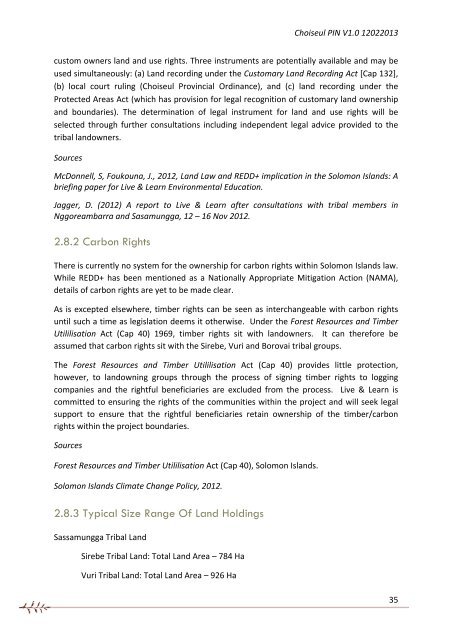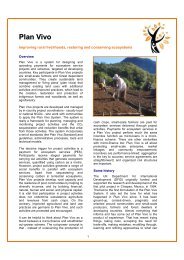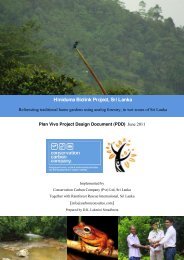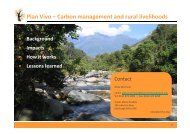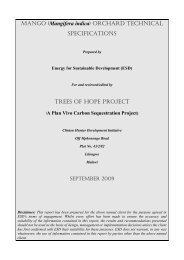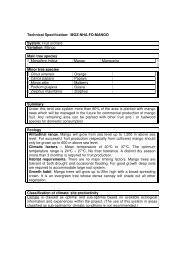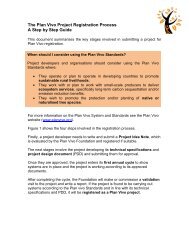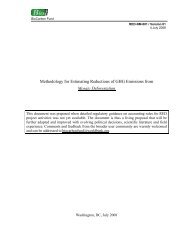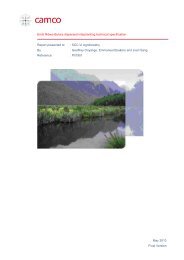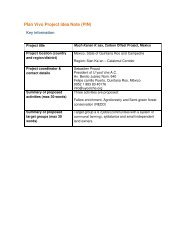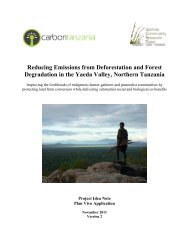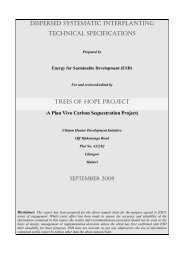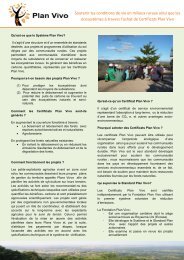Download PIN - Plan Vivo
Download PIN - Plan Vivo
Download PIN - Plan Vivo
- No tags were found...
Create successful ePaper yourself
Turn your PDF publications into a flip-book with our unique Google optimized e-Paper software.
Choiseul <strong>PIN</strong> V1.0 12022013 custom owners land and use rights. Three instruments are potentially available and may be used simultaneously: (a) Land recording under the Customary Land Recording Act [Cap 132], (b) local court ruling (Choiseul Provincial Ordinance), and (c) land recording under the Protected Areas Act (which has provision for legal recognition of customary land ownership and boundaries). The determination of legal instrument for land and use rights will be selected through further consultations including independent legal advice provided to the tribal landowners. Sources McDonnell, S, Foukouna, J., 2012, Land Law and REDD+ implication in the Solomon Islands: A briefing paper for Live & Learn Environmental Education. Jagger, D. (2012) A report to Live & Learn after consultations with tribal members in Nggoreambarra and Sasamungga, 12 – 16 Nov 2012. 2.8.2 Carbon RightsThere is currently no system for the ownership for carbon rights within Solomon Islands law. While REDD+ has been mentioned as a Nationally Appropriate Mitigation Action (NAMA), details of carbon rights are yet to be made clear. As is excepted elsewhere, timber rights can be seen as interchangeable with carbon rights until such a time as legislation deems it otherwise. Under the Forest Resources and Timber Utililisation Act (Cap 40) 1969, timber rights sit with landowners. It can therefore be assumed that carbon rights sit with the Sirebe, Vuri and Borovai tribal groups. The Forest Resources and Timber Utililisation Act (Cap 40) provides little protection, however, to landowning groups through the process of signing timber rights to logging companies and the rightful beneficiaries are excluded from the process. Live & Learn is committed to ensuring the rights of the communities within the project and will seek legal support to ensure that the rightful beneficiaries retain ownership of the timber/carbon rights within the project boundaries. Sources Forest Resources and Timber Utililisation Act (Cap 40), Solomon Islands. Solomon Islands Climate Change Policy, 2012. 2.8.3 Typical Size Range Of Land HoldingsSassamungga Tribal Land Sirebe Tribal Land: Total Land Area – 784 Ha Vuri Tribal Land: Total Land Area – 926 Ha 35


